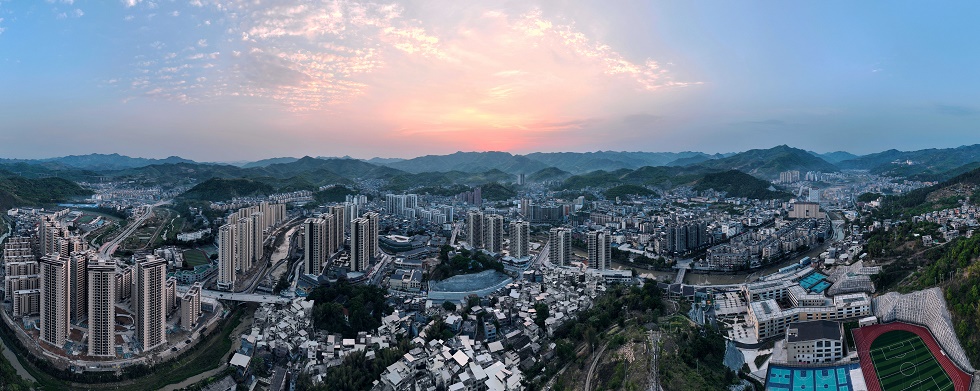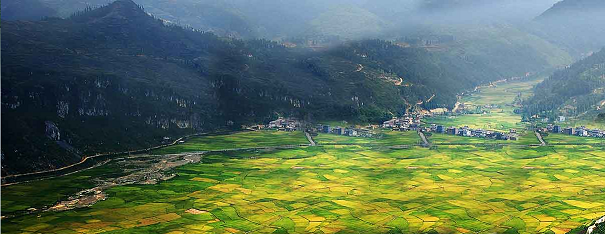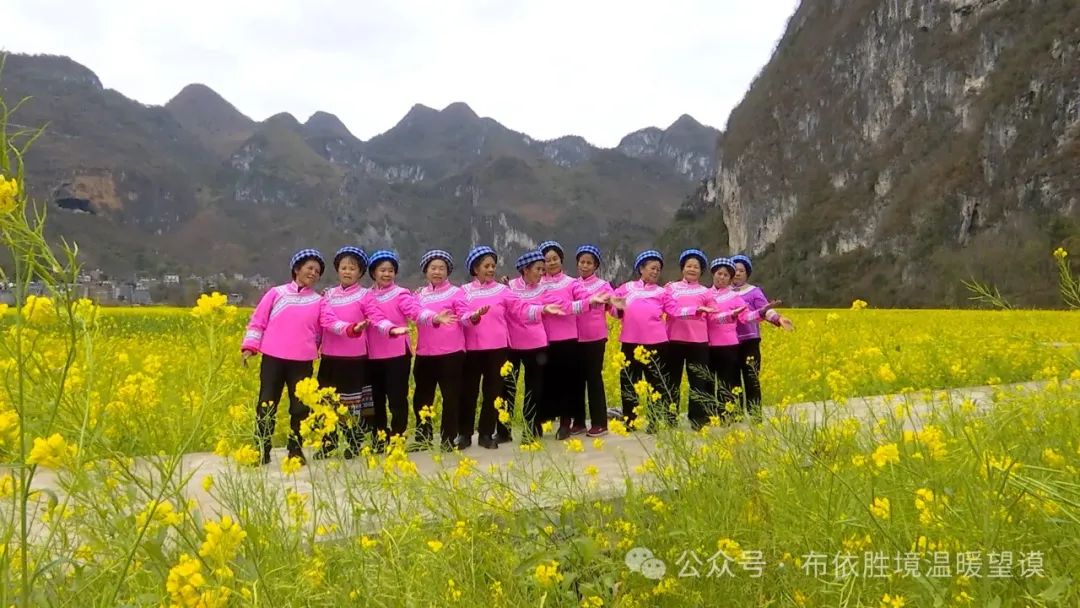- Profile Jurisdictions GOV DEPARTMENTS Cultures Travelling Educate
-
Wangmo is located in southern Guizhou, in the eastern part of Qianxinan Prefecture. Established as a county in 1940, its name derives from the homophone for “Queen Mother” in the Buyi dialect. Covering a total area of 3,018 square kilometers, the county administers 12 townships and 4 subdistricts. With a total population of 328,900, it is home to 19 ethnic groups including the Buyi, Miao, and Yao. Ethnic minorities account for 81.09% of the total population, with the Buyi people comprising 63.55%. The county has been designated a National Model County for Ethnic Unity and Progress. In 2020, the county achieved high-quality poverty alleviation with a 99.88% public approval rate. Its regional GDP surpassed 10 billion yuan for the first time, reaching 10.048 billion yuan. By 2024, the county's GDP grew to 10.933 billion yuan, expanding at a 4.9% rate—ranking third in Qianxinan Prefecture.

Water and land transportation are convenient. The Wang'an-Luowang-Ziwang and county-to-Wangmo Port expressways cover 11 townships (subdistricts), while five national and provincial highways including G552 and S318 traverse the county. With a total road mileage of 4,248 kilometers, the county has been recognized as a national model county for “Four Good Rural Roads.” The county seat is 235 kilometers from Guiyang City and 159 kilometers from Xingyi City. The waterway from Wangmo Port's Zexiang Wharf to the Madaomen Wharf at the Pearl River estuary spans 1,250 kilometers. The Huangtong-Baise Railway, Zexiang-Hongshui River Expressway, and the 1,000-ton navigation facility at the Hongshui River Longtan Hub are projected to be completed and operational during the 15th Five-Year Plan period.
The ecological environment is outstanding. The county enjoys a subtropical monsoon humid climate characterized by an early spring, long summer, late autumn, and short winter. The average annual temperature is 19.5°C, with an annual precipitation of 1,241.1 mm. The forest coverage rate reaches 70.53%, earning it the titles of “Guizhou's Natural Greenhouse” and “Forest City.” It has been honored with awards such as “National Top 100 Counties for Afforestation and Greening” and “Guizhou Provincial Forest City.” It houses the Wangmo Beipanjiang National Wetland Park, the Cycad Nature Reserve, and the Duyi South Subtropical Valley Monsoon Rainforest Nature Reserve. The county maintains 21 protected areas and sites for rare plants, including 7 nationally Class I protected plant species and 81 nationally Class II protected plant species.

Natural resources are abundant. Proven mineral reserves include 100 million cubic meters of limestone sandstone for decorative use, 300 million tons of limestone for cement production, 250 million cubic meters of diabase, and 11 million tons of barite. The Mashan and Shitun areas hold over 25 million tons of calcite reserves. Abundant clean energy resources, including wind, solar, and hydropower, with annual sunshine hours reaching 1,408 hours and hydropower potential totaling 115,800 kilowatts.
Green Industry Cluster. Vigorous development of green organic agriculture includes 272,000 mu of chestnut orchards, 106,900 mu of mango plantations, 147,000 mu of oil tea plantations, 33,700 mu of honey plum orchards, and 22,300 mu of purple tea plantations. The region has earned the honors of “Famous Chestnut County” and “Hometown of Chinese Purple Tea.” “Wangmo Chestnuts,” “Babu Tea,” and “Wangmo Mangoes” hold national geographical indication product certifications, while “Wangmo Tea Oil,” “Wangmo Green Lemons,” and “Angwu Artemisia” feature in the “National Catalog of Famous, Special, Superior, and Novel Agricultural Products.” Installed capacity of wind and solar power stations exceeds 1 million kilowatts.

Unique cultural and tourism resources. Wangmo was one of the earliest regions where the Red Army entered Guizhou to carry out revolutionary activities. It boasts red resources such as the Memorial Hall of the Guizhou-Guangxi Border Committee of the Communist Party of China, the Memorial Hall of the Kafa Company of the Red Seventh Army, and the Site of the Long March Reunion of the Red Army in Boduo. The Buyi language and script are well-preserved, earning Wangmo the titles of “Buyi Language and Script Training Base,” “China's Capital of Ancient Buyi Songs,” “China's Hometown of Buyi Textile Culture,” and Hometown of Guizhou Ethnic Cuisine Culture.“ The Wangmo ”March Third" Buyi Cultural Festival is listed in the third batch of the National Intangible Cultural Heritage Protection List. The county boasts six 3A-rated scenic areas: Xintun Buyi Village, Zexiang Lakeside Wellness Town, Jiaona Purple Tea Town, Kafa Company Site, Yao Village on Youmai Ridge, and Sanglang Seven Stars Scenic Area.
contact details
Tel:00-86-0859-4610333
Address:No.25, Huaqiao West Road, Wangmu Street, Wangmu County, Qianxinan Prefecture, Guizhou Province, China
Working hours:Monday to Friday 8:30 a.m. - 12:00 p.m. 14:30 p.m. - 18:00 p.m. (except holidays)
